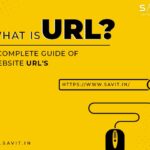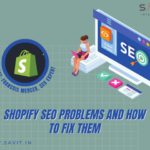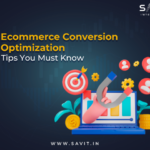In the bustling digital sphere, standing out is crucial. That’s where programmatic SEO steps in, transforming how businesses approach online visibility. It’s not just about keywords; it’s a game-changer that uses automation and smart strategies to create custom content. With programmatic SEO, businesses unlock possibilities, reaching millions of potential clients effortlessly.
This method makes it easier to create multiple highly effective SEO-friendly landing pages. Say goodbye to standard approaches and hello to a fresh, dynamic way of boosting your online presence. Programmatic SEO allows businesses to improve their online visibility in a very efficient and accurate way.
Programmatic SEO is a technique for publishing numerous landing pages to attract more search traffic. Its a secret sauce that uses data and pre-programmed rules to create many SEO-friendly web pages.
Sounds too good to be true? Believe it. Dive into this blog to explore the magic and begin your journey with programmatic SEO.
Programmatic SEO: What is it?
The process of creating original, excellent pages at scale with a template and database is known as programmatic SEO.
Producing material that is as in-depth and comprehensive as a traditionally published article yet repeated thousands, if not millions of times at scale, is the aim of programmatic SEO. A website that uses programming can have 200 pages or 4 million pages. Making sure every page has a distinct function in the search process is crucial.
Building a database, linking it to a template, and releasing thousands of pages is an oversimplification of programmatic SEO. However, if this is all you do, congrats—you have just produced thousands of spam messages.
Content creation using programming is a potent tool that can utterly spam a website or grow it immensely. In order to truly contribute to the advancement of SEO services, we need to start thinking more broadly—or perhaps more accurately, “deeper” about our content.
What Programmatic SEO Offers:
Traffic may be unlocked in all the hidden corners of the internet using programmatic SEO. The days of selecting a few keywords, paying for content, publishing the post, and hoping it ranks for several terms are long gone. We can now win all searches available in one template and target entire categories.
Businesses that use programmatic SEO can:
- Gain a large number of wins.
- Create comprehensive material fast.
- Increase low-lift engineering.
- Obtain “quicker” results— (use this in a restricted or infrequent manner) swiftly, which implies that obstacles and outcomes materialise rapidly.
Negative aspects of programmatic SEO
Like any strategy, programmatic SEO has drawbacks. Here are a few of them:
- Indexing is challenging.
- Extremely risky- poor quality execution may stunt site expansion.
- Restricted by data availability.
- Remember that you will fail if you attempt to fool Google with programmatic SEO or build People.
- Production efficiency and data depth are excellent ways programmatic content improves content creation.
Here’s a step-by-step guide on putting a programmatic SEO structure in place.
Step 1: Conduct programmatic SEO keyword research
Rather than selecting a small number of keywords and shelling out cash for custom content hubs, programmatic SEO looks to target whole keyword directories under a single organisation.
The processes for determining your keywords are as follows.
- Specify your intentions and aims.
This will get underway in a manner akin to a conventional SEO keyword study. Determine the thematic group or category that will produce company value. It doesn’t matter how much traffic you drive to show your employer or client a cool graph if it doesn’t promote the company’s goals.
Remember that commercial value might be as subtle as a session hit to expose your brand and potentially encourage a follow-up visit later or as evident as complete conversions through transactional keywords.
The following resources can be used to finish an extensive opportunity analysis:
- Determine major subjects:
Begin widely. We must specify the category in which we wish to rank after you have determined the target intent and aims. Consider this to be a step down from a headword. This refers to your site’s “niche,” powered by your product. For instance, “trucks” is a vast topic and a keyhead phrase. Going further with it is better because it’s not very intuitive and doesn’t have strong intent for a business-driving phrase. “Ford F-150” is sufficiently general yet a little more precise for our goal.
Be aware that this is a brand-specific search, but that’s okay too. Instead of attempting to surpass Ford, you can use the Ford F-150 audience’s search experience.
- Determine related terms and modifiers:
The Ford F-150 is not our catchphrase; instead, it is how one can transform into a traffic generator. We accomplish this by determining the questions that surround the primary subject. From conventional content assets and programmatic building, this is the starting point.
Your product might not be suitable for programmatic SEO if your primary topic cannot be changed through repeated searches. However, you might get a lot of traffic if you identify frequently asked questions about a product.
Timely: Questions that have an effect within a given time range. Examples include the 2022 F-150, stock values on November 18, 2022, last year’s inflation rates, and the results of last week’s sporting events.
Comparable: Questions that add value by comparison with other questions. Examples include comparing the 2008 housing costs, the F-150 and Chevy Silverado, book reviews and book categories, political allegiance by state, and zodiac sign-based hobbies and interests.
Hyper-specific: Queries useful for a limited group of people and not for a wider one. The hyper-long tail is another name for it. Examples include the following: the 1997 crime rate in Philadelphia, the 2006 World Series batting average for David Eckstein, the F-150 for sale in Marietta, Georgia, and responding to queries from the general public on Reddit and UGC.
With a typical SEO system, you would see three pages, and if you were to mentally calculate the number of states and other cars to compare, you could see as many as 100. It would take weeks to manually write all of these pages. However, as soon as our template is finished, you will have thousands of pages to publish and at least three templates for a programmatic approach.
Seek indications that the term can be changed. Three modifiers are used in the example: “vs,” “under,” and “in.” Returning to your keyword aggregator and typing in the [subject + modifier] (e.g., “F-150 vs” / “F-150 under” / “F-150 in”) is a quick approach to locating the gold mine of keywords within your topic.
This allows you to see the scale of the opportunity of each directory more clearly.
Go one step further and find additional subjects that the same keywords can be used to alter. In our example, the F-150 can be replaced with a Chevy Silverado or Ram 1500 and targeting “Trucks” with other modifications may also be a good option for a powerful website.
The level of detail you require will be specified in the additional “parameters” column. This can be expanded to be as deep or wide as your merchandise needs. You will have more pages with more modifiers and entities you find.
Long-tail target search
Repeatable, mid-to-long-tail keywords make up the sweet spot. Although the example above clearly shows that while creating an e-commerce website—a visually striking piece of work—the best use of programmatic SEO as a growth strategy is to focus on long-tail searches for keywords with informational intent.
- For instance, Weather in Delhi, India, today
- pSEO approach: Weather in {location} {date}
Although you may believe this cannot generate significant traffic, consider it more deeply.
A relatively obscure site with a respectable backlink profile might earn an estimated 3,000,000 sessions* per month from these searches by focusing on particular ZIP codes and low-search volume locations. *Calculated using conventional methods for keyword research.
Undoubtedly, Google is taking in an increasing amount of its own traffic. Hyper-specific or multi-intent keywords are typically pulled straight onto the SERP without requiring a click. It is your responsibility as a development strategy and business owner to determine the worth of each keyword group.
Even if a highlighted snippet doesn’t generate a click, is it still beneficial for introducing a brand? If so, pursue it. If not, try searching for keywords that emphasise action and investigate more.
The example of the weather may not be a workable plan for an occasional environmental writer.
However, suppose your product is a weather app. In that case, you may dramatically improve app downloads by programmatically winning thousands, if not millions, of keyword variations that are highly relevant to your target audience.
Step 2: Creating the content template
The most critical component of the build is a programmable template. Here, data pieces are stacked to create a single, compelling piece of content that programmatically satisfies the user’s purpose, combining the art and science of SEO. The primary distinction between programmatic SEO tactics and conventional SEO is that the former involves creating templates rather than final pages.
This means that, for SEOs, all of your customary bespoke updates have to be carried out in bulk and, yes, via engineering tickets.
A page template should achieve three objectives:
Objective 1: Add value where the conventional content flow fails.
There are instances when content works better when it isn’t attempted to fit into a blog article.
Comparing pain points programmatically is a really useful feature and is an excellent application for a programmed method. G2 solves this with ease by immediately comparing product prices, reviews, and similar products on a category page. It adds value to the page that is not possible with handwritten material.
Objective 2: Delve far into the question while establishing limits
When creating your template, keep your audience and Google search results (SERPs) in mind. Establish boundaries first. Consider when your content will cease changing if you are creating geo-based content.
Does the state of your offering change? Via county? by postal code? Gateway pages are constructed with thousands of pages based on the same material. They are incredibly useless to visitors and simple for Google to remove. A template aims to delve deeply into a subject; the outcome is scale.
Objective 3: Provide access to data that was previously inaccessible
As programmatic content is created for humans, it can provide access to data that was previously unavailable via means of a database. It turns into a tool for storytelling. Today’s election data is so sophisticated that it allows us to visualise results down to the county level. Is this data new?
Of course not, but we’ve added fresh value to the discourse by bringing an enormous, intimidating database to life in a format that is simple to read.
High-quality templates:
- Responds to several queries
- Distinct data pointsrips
- Greater page value compared to a pipeline
- Every page has a distinct value.
Low-quality templates:
- Responds to one clear question
- Scrapes other websites
- Little value is provided, but it scales quickly,
- Pages that act as gateways to deceive Google
- An excellent template will check all or most of the boxes.
Google will promptly remove low-quality templates that simply tick one box from its index since they are spam.
Step 3: Connect to a database
Any information source can be included in your database to create content. A custom data warehouse updated every second can be as complicated as that, or it might be as straightforward as a CSV export from a government data source.
Creating a database that satisfies the objectives specified by your template is crucial. Furthermore, don’t be alarmed by the word database. Finding the proper data doesn’t need you to be a data scientist. You should be aware of the needs of your audience and perhaps have some Excel proficiency. If you don’t know how to use Python or Excel, you can always outsource.
A repository including all publicly available data:
- Pay attention to your clients.
- Create an archive of reviews.
- Sort questions about support tickets by subject.
- Monitor market values both geographically and over time.
- Create a database centred around converting your brand or product into a special kind of resource.
Step 4: Post and allow to be indexed
Indexing is the first hurdle to properly using programmatic SEO traffic generation because everything is done at scale. If you follow all programmatic SEO best practices and less than 30% of your content is indexed, don’t panic. Similar in nature, programmatic pages will place the majority of pages in either the Discovered (currently unindexed) or Crawled (now unindexed) categories. More pages begin to get noticed or crawled but are not indexed if you post more content at once.
Remain calm. Examine the published templates carefully and consider whether you add something unique to the SERP. If so, proceed with these three actions.
- Improve the internal link architecture.
Programmatic SEO requires ten times more internal links compared to conventional editorial pages. One directory can yield hundreds, thousands, or even millions of pages, and you will need to create context for each connected page as you go. From the Directory > Leaf pages, create link silos. Google and visitors will ignore a page that has the same 20 links hardcoded into it, making it useless.
As with traditional SEO, invest time in contextual linking and collaborate with your developer to determine the appropriate logic for every single page. Your website will have more dead ends and thousands of orphaned pages if you neglect internal linking. These pages might never be crawled and are virtually fully regarded as non-influential.
- Make a solid sitemap framework.
Sitemaps for programmatic SEO are just as crucial as strong internal links. About 50k URLs can be listed in a robots.txt sitemap at most. You will need dozens of sitemaps and sitemap indexes for larger sites. Arrange the robots.txt file according to the structure of your website. Create a sitemap for every directory if at all feasible. By doing this, sitemaps will be categorised by subject instead of posting date, making it easier for Google to index each category. After it’s configured, make sure to forcibly crawl every single sitemap twice or until Google has returned to the website numerous times (yes, even if you have hundreds of sitemaps).
- Make a sitemap in HTML.
Your 2009 HTML sitemaps are not these. Every “milestone” page should include a link to an identifiable directory page. You cannot connect to every leaf page on a website with millions of them, but you can target links under Category > Subcategory. This improves your internal link structure by enabling directories to serve as link hubs and establishing a simple flow from Homepage > Category > Subcategory.
In summary
The procedure for creating a programmatic SEO structure is outlined below
- Find a chance for a recurring search.
- Construct a template for various content.
- Construct and link a strong database.
- Add internal links to your templates.
- Make a sitemap structure in robots.txt.
- Publish.
- Repeat after optimizing.
Connect with Savit Interactive, a leading digital marketing agency that offers exceptional SEO strategies, including programmatic SEO, to improve your digital presence and ranking.








































